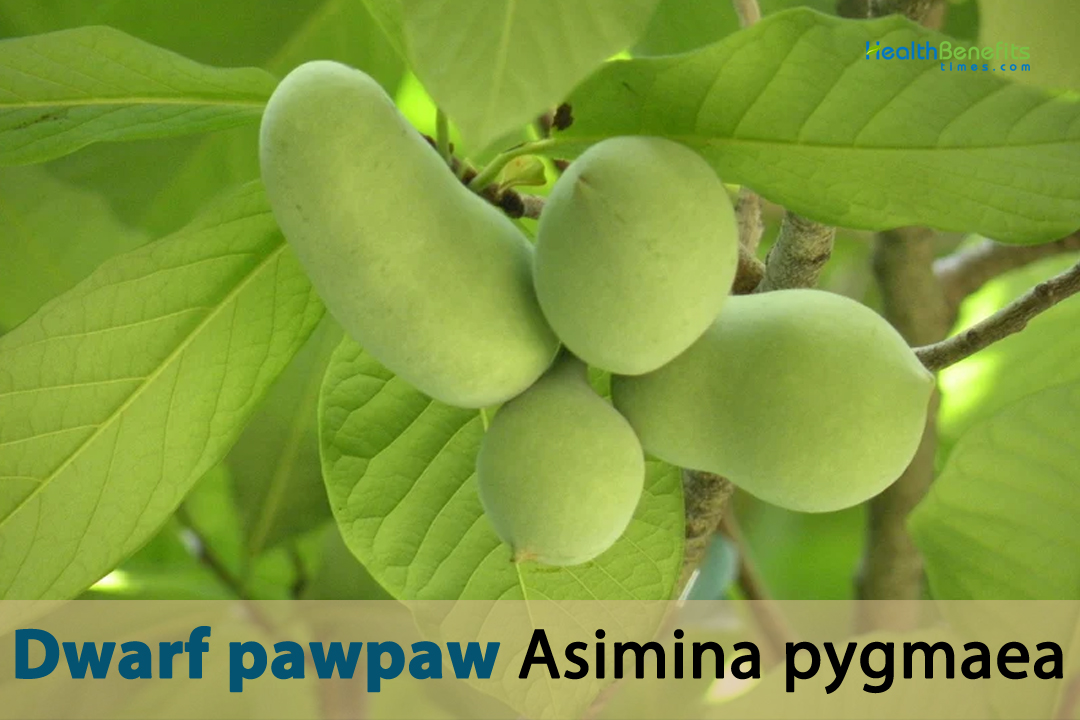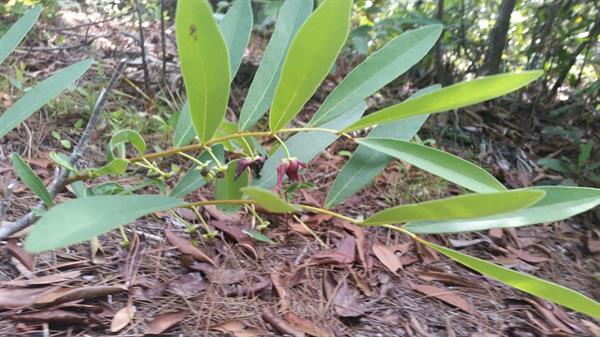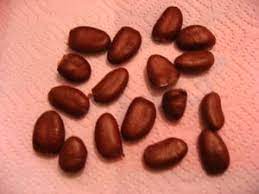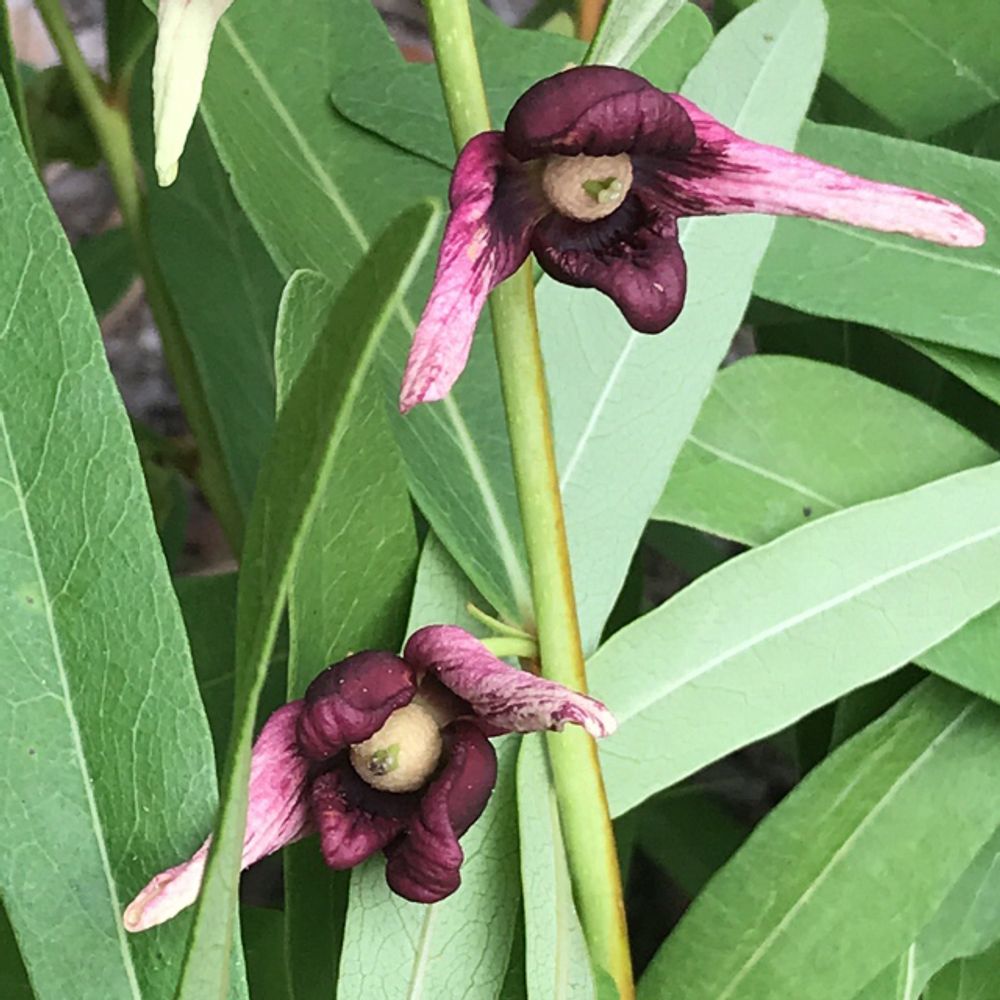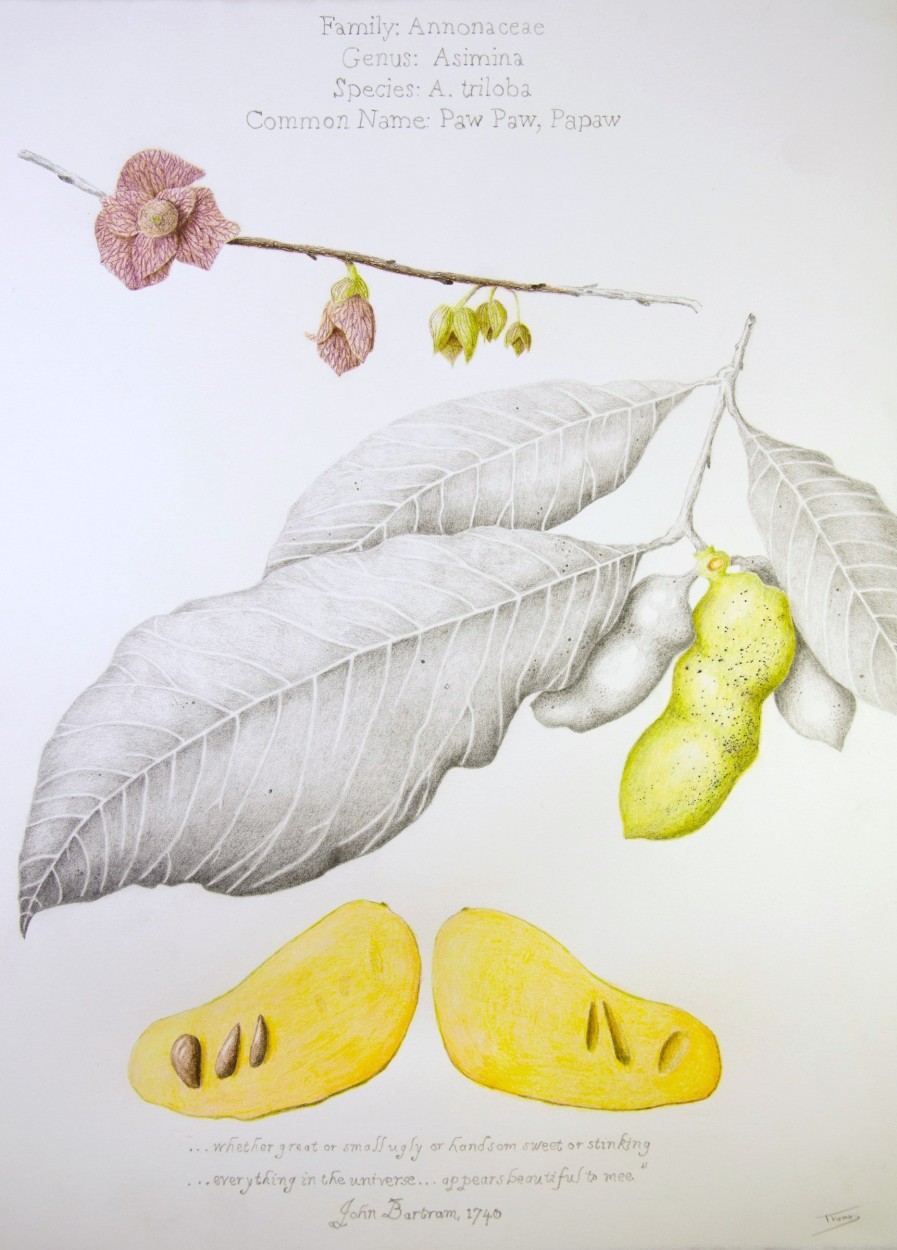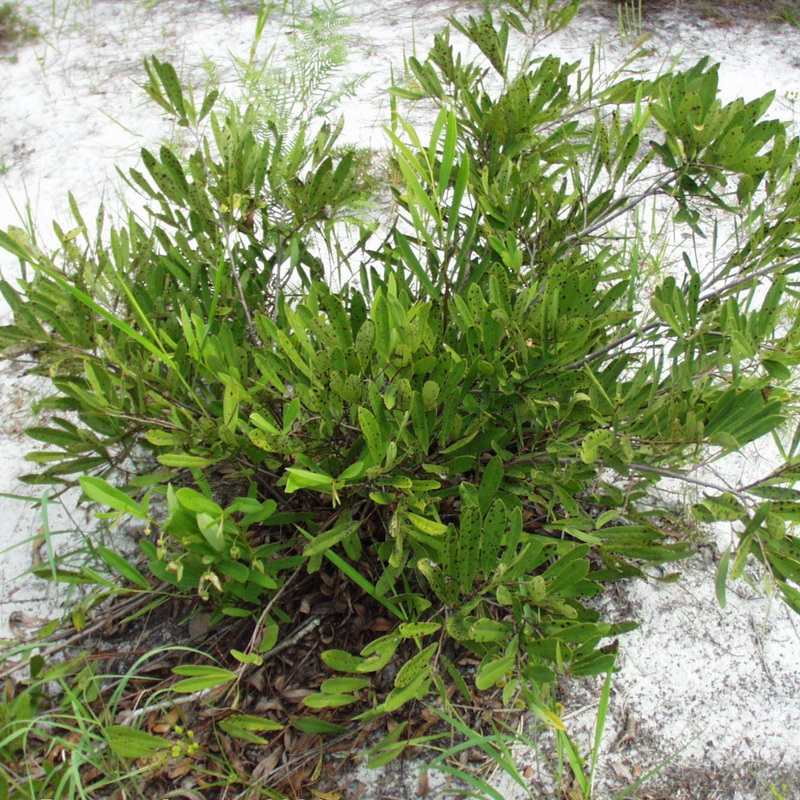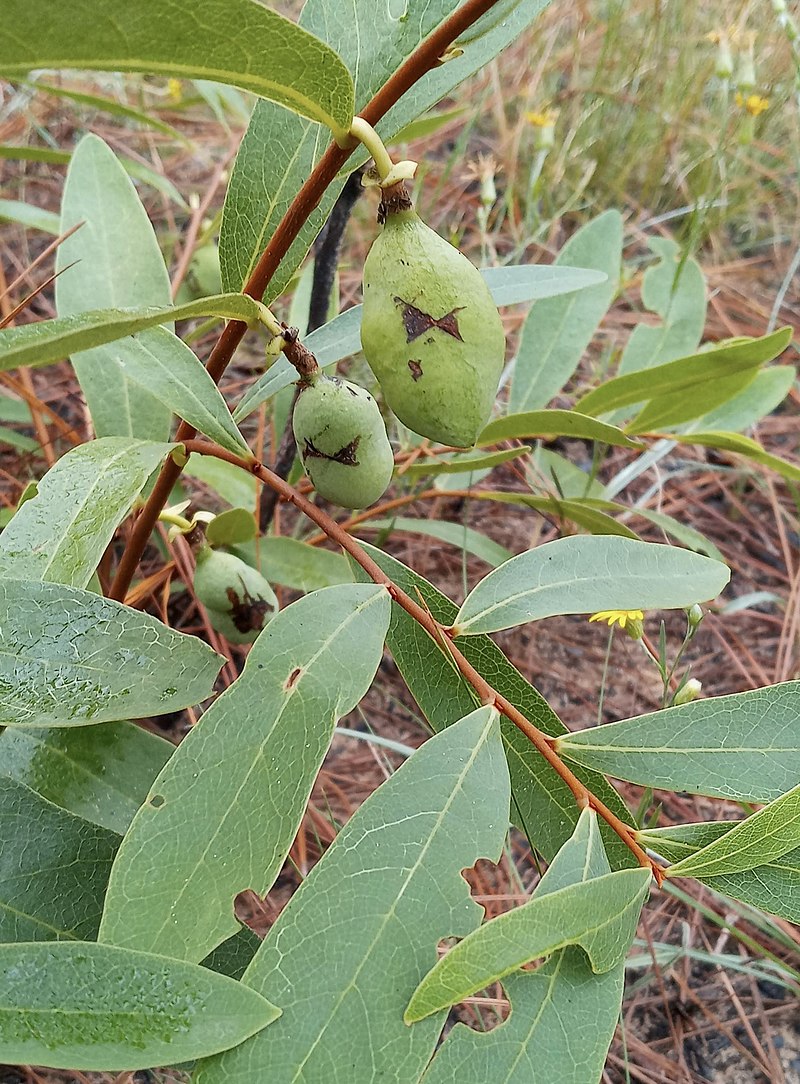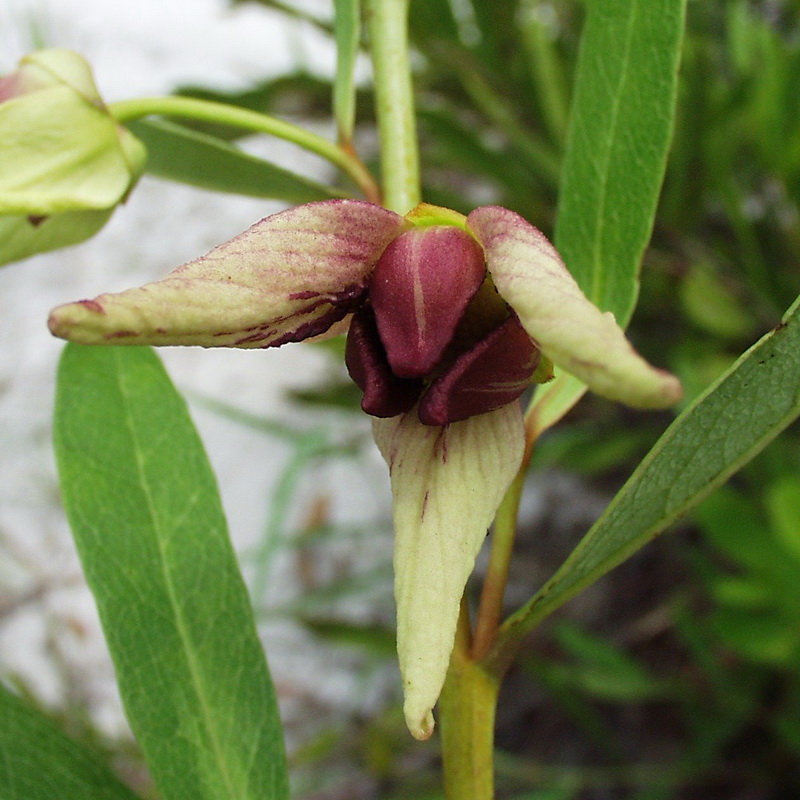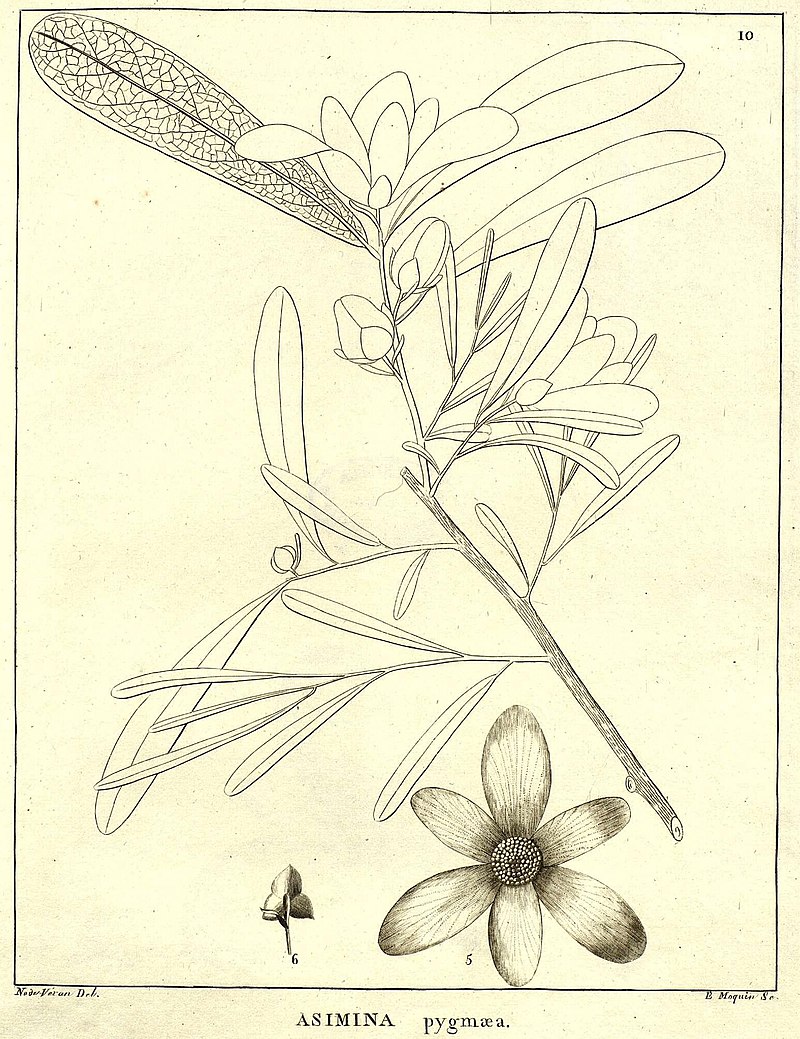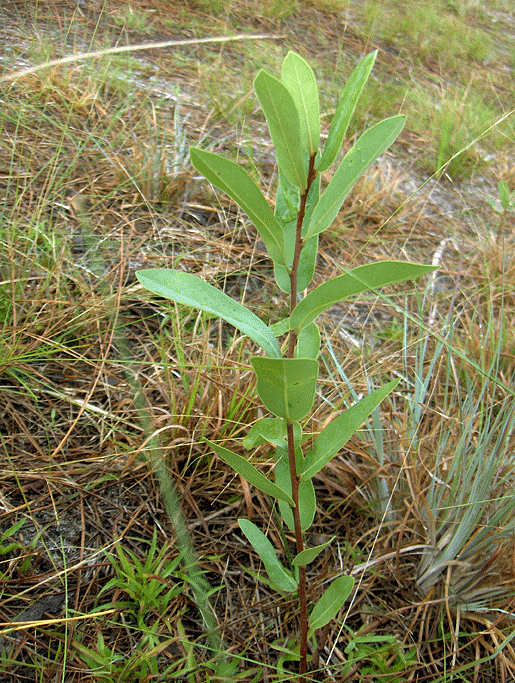The nomenclature “Asimina” is derived from the appellation given to the pawpaw fruit by Native Americans. It is hypothesized that the Algonquian-speaking communities residing in eastern North America employed the term “asimina” to denote the fruit in question. Eventually, it was designated as the genus name of the pawpaw plant. The Latin name for this species is “pygmaea,” which translates to “pygmy” or “dwarf.” “Pygmaea” is the nomenclature employed to designate the diminutive stature of this specific species of pawpaw, in contrast to other members of the Asimina genus. Similar to other pawpaw species, certain Native American tribes employed botanical components for medicinal intentions, such as the treatment of digestive and skin disorders. Today, however, neither these traditional applications nor their prevalence are well-documented.
Dwarf pawpaw Facts
| Dwarf pawpaw Quick Facts | |
|---|---|
| Name: | Dwarf pawpaw |
| Scientific Name: | Asimina pygmaea |
| Origin | Several southeastern states |
| Colors | Initially green turning to brown or black when mature |
| Shapes | small, oblong-shaped fruit that is typically 2 to 4 cm in length |
| Taste | Sweet and tropical |
| Major nutrients | • Vitamin C • Vitamin B6 • Riboflavin • Potassium • Magnesium • Dietary Fiber • Carbohydrates • Proteins • Calories |
| Health benefits | Digestive Aid, Weight Management, Heart Health, Skin Health, Eye Health, Bone Health, Cancer Prevention, Wound Healing, Menstrual Pain Relief and Hydration |
| Name | Dwarf pawpaw |
|---|---|
| Scientific Name | Asimina pygmaea |
| Native | Within several southeastern states including Florida, Alabama, Mississippi and Georgia in the United States |
| Common Names | Small flower Pawpaw, Small-flowered Pawpaw, Florida Dwarf Pawpaw, Four-petal Custard Apple, Swamp Pawpaw, Four-petal Pawpaw, Southern Dwarf Pawpaw, Common Dwarf Pawpaw, Small-flowered Custard Apple, Four-petalled Pawpaw, Four-parted Pawpaw, Small flowered Pawpaw, Four-petal Pawpaw, Swamp Custard Apple, Little flower Custard Apple, Dwarf Custard Apple, Little flower Pawpaw |
| Name in Other Languages | Afrikaans: Dwergpawpaw Amharic: Doro papaya Arabic: Burtuqal khadhra’ sagheera (برتقال خضراء صغيرة) Assamese: Sot pepe (ছোট পেঁপে) Bengali: Bon pepē (বন পেঁপে), Bon papaya, Sanko papaya, Bon papeyta (বন পপেটা) Burmese: Nan pan thee (နန်းပန်သီ) Chhattisgarhi: Buna papai (बुना पपई) Chinese: Āi mùguā (矮木瓜) Czech: Trpasličí papája Danish: Dværgpapaya Dogri: Boun pepitha (بون پپیتھا) Dutch: Dwergpapaja English: Dwarf pawpaw, Gopherberry Filipino: Papaya ng bunsong kapatid, Papayang bungi Finnish: Kääpiöpapaija, Pieni papaija, French: Papayer nain, Pawpaw Nain, Asiminier nain Garo: Apsoa German: Zwergpapaya, Zwerg-Papau Greek: Ntinó papáya (Ντινό παπάγια) Gujarati: Nano papaya (નાનો પપાયા) Haitian Creole: Papay pitit Hausa: Luluwan kwakwa Hawaiian: Papaya lau nui Hebrew: Papaya ktana (פַּפַּיָּה קְטַנָּה) Hindi: Bauna papeeta (बौना पपीता) Hungarian: Törpe papaja Igbo: Akwụkwọ nwere ihe onyinye Indonesian: Pepaya kerdil Italian: Papaya nano, Pawpaw Nano Japanese: Dowāfu papaiya (ドワーフパパイヤ), Chibipapaya (ちびパパイヤ) Kannada: Dvārf papaya (ದ್ವಾರ್ಫ್ ಪಪಾಯ), Chikka parangi hannu Kashmiri: Boun pepith (بون پپیتھ) Khasi: Soh-lieh Kokborok: Suong bel Konkani: Nanu papay (नानु पपय) Korean: Deuweopeu papaya (드워프 파파야), Dwarfpapaya (드워프 파파야) Kumaoni: Baun retu (बौन रेतू) Maithili: Bauna papaya (बौना पपया) Malay: Betik kerdil Malayalam: Kuṇḍu papaya (കുണ്ടു പപ്പായ), Kuruva parangi Manipuri: Laith laija (ꯇꯥꯡ ꯇꯝꯇꯟ) Marathi: Lahan papaya Nagamese: Ban pempa (বন পেঁঁপা) Nepali: Chhoto papaya, Rukhako payapura Norwegian: Dvergpapaya Odia: Pransa papa (ପ୍ରାଂସ ପପା) Persian: Papaye Kuchulu (پاپای کوچولو) Polish: Papaja karłowata Portuguese: Mamão anão, Pawpaw Anão Punjabi: Chhota papeeta (ਛੋਟਾ ਪਪੀਟਾ) Rajasthani: Sunya papai (सुण्य पपई) Romanian: Papaya pitică Russian: Karlikovaya papaiya (Карликовая папайя) Sanskrit: Baunapapya (बौनपप्य) Santali: Bata papaya Sindhi: Rang jo papayo (رنگ جو پاپيو) Sinhala: Sudu papaw, Sudu papaw (සුදු පපව්) Slovak: Trpasličia papája Somali: Papaya yar, Qumboow cusub Spanish: Papaya enana, Lechosa enana, Pawpaw Enana Swahili: Papaya ndogo Swedish: Dvärgpapaya Tamil: Kuṇṭu pappāḷi (குண்டு பப்பாளி), Kutti papaya (குட்டி பப்பாளி) Telugu: Ḍvārf papaya (డ్వార్ఫ్ పపాయ), Chinna papaya (చిన్న పపాయ) Thai: Malako chom (มะละกอจม), Sa-wa-wiit (สวาวิต) Tulu: Chikka papaya (ಚಿಕ್ಕ ಪಪಾಯಿ) Turkish: Cüce papaya Ukrainian: Karlykova papaya (Карликова папая) Urdu: Choti papeeta (چھوٹی پپیتا), Chhota papita, Boun pepitha (بون پپیتھا) Vietnamese: Dứa lùn Yoruba: Ibepe didun Zulu: Icwebile yilula |
| Plant Growth Habit | Small, open, arching, long-lived, deciduous shrub or tree |
| Growing Climates | Pine flat woods, sandy peat of pine-palmetto flats, savannas, low sandy fields, low sand ridges, coastal hammocks, upland forests, swamps, edges of streams or floodplains, wetlands |
| Soil | Thrives in well-draining, rich, and slightly acidic soil. The soil should be fertile and have good organic matter content. A pH level between 5.5 and 7.0 is suitable |
| Plant Size | Approximately 1.5 to 2.0 feet tall by 1-1.5 feet wide |
| Root | Develop a taproot when they are young |
| Stem | herbaceous, non-woody stems that are soft and fleshy |
| Bark | Smooth and grayish-brown when young turning to slightly rougher in texture |
| Leaf | Simple and alternate, with a dark green color and a somewhat leathery texture. They are lance-shaped and can grow up to 8 centimeters (3 inches) in length |
| Flowering season | February to April |
| Flower | Small, inconspicuous flowers with three sepals and six petals that are brownish-purple or maroon in color. The flowers are often hidden among the leaves and may not be easily noticed |
| Fruit Shape & Size | Small, oblong-shaped fruit that is typically 2 to 4 centimeters (0.8 to 1.6 inches) in length |
| Fruit Color | Initially green turning to brown or black when mature |
| Fruit Weight | Around 1 to 2 pounds (0.45 to 0.9 kilograms) when ripe |
| Flesh | Orange or yellow and has a soft, creamy texture |
| Fruit Skin | Smooth, thin skin |
| Seed | Typically dark brown or black in hue, spherical in shape |
| Flavor/Aroma | Sweet, tropical, and fruity |
| Taste | Sweet and tropical |
| Plant Parts Used | Leaves, fruits, barks, roots |
| Propagation | By seeds, softwood or semi-hardwood cuttings, division and layering |
| Lifespan | Ranging from 10 to 20 years |
| Season | May to June |
| Major Nutrition |
|
| Health benefits |
|
| Available Forms |
|
Plant Description
Dwarf pawpaw is a small, open, arching, long-lived, deciduous shrub or tree that normally grows about 1 to 2 meters (approximately 3 to 6.5 feet). The plant is found growing in pine flat woods, sandy peat of pine-palmetto flats, savannas, low sandy fields, low sand ridges, coastal hammocks, upland forests, swamps, edges of streams or floodplains and wetlands. The plant thrives in well-draining, rich, and slightly acidic soil. The soil should be fertile and have good organic matter content. A pH level between 5.5 and 7.0 is suitable.
Consistent with its larger counterparts, Native American tribes have historically consumed the edible fruit of dwarf pawpaw. It is cultivated commercially less frequently and to a lesser extent than the larger pawpaw species. Fresh, blended into smoothies, or incorporated into fruit salads, it is a delectable refreshment option. Additionally, it finds application in a multitude of pastries, tropical fruit beverages, and culinary preparations. Diverse wildlife species, such as birds, raccoons, and small mammals, rely heavily on the fruit as a sustenance source. It contributes to the local ecosystem by serving as a sustenance source. Certain regions classify it as a species of conservation concern owing to the degradation and loss of its habitat. Precautions and protection efforts are directed towards its natural habitat.
Roots
Although dwarf pawpaw plants typically have shallow root systems, immature specimens may develop taproots. Lateral roots emanate from the fibrous and adventitious main roots in order to investigate the soil in search of nutrients and water. Lateral roots have the ability to protrude from the plant’s base for distances of several feet. Root hairs are minuscule, hair-like formations that envelope the root surface. They substantially augment the soil’s surface area available for the absorption of water and nutrients, thereby enabling the plant to effectively assimilate vital elements. Plants may, under certain conditions, develop aerial roots, or roots that extend beyond the surface of the soil. These roots can provide stability for the plant by affixing to adjacent objects or structures.
Stem
Dwarf pawpaw plants have delicate, fleshy stems that are herbaceous and devoid of wood. Protruding from the stems are numerous branches. An arrangement of branches protrudes from the primary stem, resulting in a compact and luxuriant growth pattern. The fruits and foliage of the plant are transported by these branches. The dimensions and height of the stems of a given plant may differ due to environmental conditions, age, and the particular cultivar. In general, the stems of compact varieties attain a maximum height of a few feet, which is relatively short. The silky, succulent-like consistency of stems is characteristic of herbaceous plants. Their woody durability is inferior to that of perennial trees.
Bark
Young plants have bark that is typically silky and grayish-brown in hue. Although the bark may acquire a slightly coarser texture as the tree matures, it generally retains a comparatively smooth texture in contrast to the bark of certain other species of trees. With advancing age, the epidermis of mature plants may develop minute fissures and a darker hue.
Leaves
The ends of its leathery, 4–11 centimeter-long leaves are blunt or rounded, with the occasional addition of a notch. The leaf margins are curled inwards toward the underside. The underside of the dark green, hairless foliage is adorned with a network of veins, while the upper surface is paler. Twisted petioles range in length from 3 to 10 millimeters.
Flowers
Thin axillary peduncles measuring 1.5–4 centimeters in length support its blossoms. Its brown-crimson flowers emit a pungent odor of decaying flesh or yeast. The six petals of its blooms are arranged in two rows of three. 1.5–3 cm in length, its oblong to oval, fleshy exterior petals are rolled inward toward their outer surface. 0.5–2 cm in length, its oval, fleshy interior petals are a deeper shade of color than its outer petals. On the interior surface, the bases of the inner petals are swollen and wrinkled. The interior petals’ apexes are rolled inward. Mature stamens are globular, 4–7 mm in width, and a shade of light green to pink. Its blossoms consist of two to five carpels.
Fruits
Fruits are typically oblong or pear-shaped and range in length from 4 to 8 inches on average, although their dimensions may vary. Fruits undergo a color transformation as they mature. As they mature, they progressively change from green to yellow or orange. The degree of ripeness can be inferred from the coloration of the fruit; completely ripe fruits exhibit a vibrant orange hue. The epidermis is smooth, paper-like, and thin. The fruit is particularly simple to skin when it is ripe. When entirely mature, the flesh becomes succulent, a brilliant shade of orange, and delightfully sweet. It melts into a smooth consistency that is effortless to remove using a utensil. Additionally, the flesh of most papayas is devoid of seeds or comprises minuscule, palatable seeds that are not as conspicuous as those found in conventional papayas. Fruit possesses an enticing tropical aroma, characterized by a faint musky undertone. Its flavor is frequently compared to a combination of papaya, melon, and mango, which contributes to its widespread use in fruit salads, smoothies, and fresh consumption.
Seeds
Seeds of the dwarf pawpaw variety are typically dark brown or black in hue, spherical in shape. They resemble the seeds of conventional papaya varieties considerably less in size. The seeds are typically concentrated in the central cavity of mature fruits, which is encircled by the succulent and sweet flesh. The seeds are encased within a capsule composed of gelatin. Although seeds are edible, some individuals prefer to consume them in addition to the fruit’s interior. The seeds are crunchy and have a peppery, mildly bitter flavor.
Health benefits of Dwarf pawpaw
Dwarf pawpaw, also known as papaya, offers a wide range of health benefits due to its rich nutritional profile. Here is a detailed overview of the health benefits of dwarf pawpaw:
1. Rich in Nutrients
A nutritional dynamo, dwarf pawpaw is loaded with minerals, vitamins, and other vital nutrients. Folate (vitamin B9), vitamin C, vitamin A, vitamin E, vitamin K, and several B vitamins (B1 thiamine, B3 niacin, B5 pantothenic acid, and B6 pyridoxine) are all abundant in this food item.
2. Antioxidant Properties
Papaya is rich in flavonoids, polyphenols, beta-carotene, and lycopene, among other antioxidant compounds. By neutralizing detrimental free radicals in the body, these antioxidants reduce the risk of chronic diseases and oxidative stress.
3. Digestive Aid
An enzyme known as papain is present in dwarf pawpaw and facilitates in the digestion of proteins. Constipation, dyspepsia, and bloating may be alleviated with its use. Papaya consumption is beneficial for the digestive system.
4. Weight Management
Papaya can serve as a beneficial supplement to a weight management regimen due to its fiber content and minimal caloric value. By promoting satiety and a sense of satisfaction, dietary fiber aids in the reduction of total caloric intake.
5. Heart Health
Papaya’s composition of antioxidants, fiber, and potassium is beneficial to cardiovascular health. Potassium aids in blood pressure regulation, whereas fiber reduces cholesterol levels and thus the risk of cardiovascular disease.
6. Immune System Support
Papaya’s substantial vitamin C content fortifies the immune system, thereby assisting the body in its defense against pathogens and diseases. Consistent ingestion may enhance overall immune function.
7. Skin Health
The essential vitamins C and A found in papaya promote healthy epidermis. They stimulate the production of collagen, which maintains youthful, robust skin. Acne and eczema are two additional skin conditions that papaya may alleviate.
8. Eye Health
Papaya contains beta-carotene, an essential precursor to vitamin A that may lower the risk of age-related macular degeneration and cataracts.
9. Anti-Inflammatory Effects
Papaya is comprised of a diverse array of compounds, including carotenoids and flavonoids, which possess anti-inflammatory properties. This may aid in the reduction of inflammation and the relief of conditions such as arthritis.
10. Bone Health
Papaya’s vitamin K contributes to the mineralization of the bone and the absorption of calcium, thereby fostering healthy and robust bones.
11. Natural Laxative
The dietary fiber present in papaya prevents constipation and aids in the maintenance of regular bowel movements. It has a laxative effect of nature and promotes digestive health.
12. Cancer Prevention
Antioxidants and phytochemicals found in papaya may reduce the risk of developing colon, prostate, and breast malignancies, according to some studies.
13. Wound Healing
Vitamin C is essential for the synthesis of collagen, a tissue repair and wound-healing protein. Papaya consumption may facilitate the recovery process.
14. Menstrual Pain Relief
The anti-inflammatory properties of papaya may alleviate the pain and cramping associated with menstruation.
15. Hydration
The high water content of dwarf pawpaw aids in hydration and the maintenance of healthy physiological functions.
Culinary uses
- Fresh Fruit: Fresh papaya is frequently consumed, either by itself or incorporated into fruit concoctions. Its tropical and sweet flavor renders it a nutritious and invigorating nibble.
- Smoothies: Smoothies are enhanced with the creamy texture and natural flavor of papaya. Incorporate it with additional fruits such as pineapple, banana, or mango to create a delectable tropical smoothie.
- Salsas: For a flavorful and revitalizing salsa, dice papaya and combine it with tomatoes, onions, cilantro, lime juice, and a pinch of chili. It is a delicious complement to grilled poultry, fish, or tortilla chips.
- Fruit Parfaits: Papaya cubes layered with granola and yogurt constitute a scrumptious and nourishing parfait fit for a breakfast or desert.
- Fruit Juices: Fresh fruit beverages can be made from papaya, or fruit punches can be blended with the fruit. Blends of tropical fruit juice frequently contain it.
- Salads: Incorporate papaya segments or slices into green salads to give the greens a contrast that is both sweet and juicy. It complements arugula, spinach, and a variety of greens well.
- Desserts: Desserts that incorporate papaya include fruit pies, pastries, and custards. It can also be stuffed with sorbet or ice cream to create an elegant yet straightforward dessert.
- Chutneys: In certain cuisines, cooked papaya chutney, which has been sweetened with sugar and seasonings, is a popular condiment. It is an excellent accompaniment to a wide range of dishes, such as barbecued meats and curries.
- Jams and Preserves: Mariano can be processed into preserves, marmalade, and jellies. Due to its pectin content and inherent sweetness, it is appropriate for preservation.
- Curries: Green or immature papaya is utilized in certain Caribbean and Asian cuisines to infuse savory dishes such as curries. Furthermore, it incorporates the flavors of the seasonings and spices and imparts a distinctive texture.
- Beverages: Smoothie bowls, tropical concoctions, and mock tails may contain papaya pulp. Additionally, it complements rum, coconut milk, and citrus beverages.
- Sushi Rolls: As a filling for sushi rolls, papaya strips are occasionally utilized, particularly in vegetarian and vegan sushi alternatives.
- Sorbet and Ice Cream: For a dessert with a tropical flavor, sorbets, ice creams, and frozen yogurt may be infused with pureed papaya.
- Grilled or Roasted: Papaya, when roasted or grilled, can lend a distinctive twist to savory dishes. In conjunction with roasted vegetables or grilled proteins, it may be served.
- Papaya Seeds: When desiccated and ground, papaya seeds can be utilized as a seasoning or peppery spice. They impart an exceptional taste to various dishes.
Other Uses
- Livestock Feed: Due to its nutritional value, some producers utilize dwarf pawpaw as livestock feed, specifically for pigs and poultry.
- Traditional Medicine: Diverse components of the dwarf pawpaw plant are utilized in traditional medicine of some cultures to treat digestive and skin disorders, among others.
- Biodegradable Packaging: Due to their biodegradable nature, papaya stems and leaves are viable alternatives for environmentally sustainable packaging materials.
- Organic Fertilizer: Composting pawpaw peels, foliage, and other organic waste produces natural fertilizers for gardens.
- Pest Control: The aroma of certain pawpaw plants can serve as a natural insect repellent in gardens, discouraging certain pests.
- Ornamental Plant: At times, dwarf pawpaw plants are cultivated for their aesthetic qualities, including their distinctive growth pattern and appealing foliage.
- Research and Education: Dwarf pawpaw is utilized to investigate plant biology and genetics in botanical education and research.
- Companion Plant: Companion plants comprised of dwarf pawpaw can be utilized to entice beneficial insects and pollinators to gardens.
- Face Masks: In homemade facial masks, pawpaw pulp and juice are utilized due to their exfoliating and skin-brightening properties.
Side effects
- Allergic Reactions: Certain individuals may develop an allergy to pawpaw, manifesting clinical manifestations including pruritus, pruritus, edema, or respiratory distress. Although uncommon, papaya allergies can induce severe reactions.
- Gastrointestinal Distress: Pawpaw’s high fiber and digestive enzyme content may cause digestive issues, such as stomach cramping and diarrhea, if consumed in excess. An excessive amount of it may function as a natural laxative, which could be problematic.
- Latex Allergy: Individuals who are allergic to latex may also exhibit sensitivity to papaya due to the presence of comparable proteins in both latex and papaya that have the potential to induce allergic responses.
- Skin Irritation: Particularly sensitive skin types may experience irritation or a searing sensation when papaya is applied directly to the skin. It is recommended to conduct a patch test prior to topical application of papaya.
- Unripe Fruit: Unripe papaya is hazardous to consume due to its high latex and papain content, both of which are difficult on the digestive system. It is commonly recommended that pregnant women refrain from consuming unripe papaya as it may induce uterine contractions.
- Medication Interactions: Pawpaw enzymes, specifically papain, have the potential to interact with specific medications, including those used to dilute the blood or regulate blood pressure. If you intend to consume pawpaw on a regular basis while taking any medications, it is vital that you consult a healthcare professional.
- Overconsumption of Seeds: Although infrequently consumed, pawpaw seeds contain compounds that, when in significant amounts, can be toxic. It is contraindicated to consume them in excessive quantities.
- Pesticide Residues: Papayas that have been improperly cleansed or not grown organically may contain pesticide residues, the ingestion of which in large quantities over an extended period of time may result in adverse health effects.
References:
https://gd.eppo.int/taxon/ASIPY
https://en.wikipedia.org/wiki/Asimina_pygmaea
http://floranorthamerica.org/Asimina_pygmaea
https://plants.usda.gov/home/plantProfile?symbol=ASPY2


